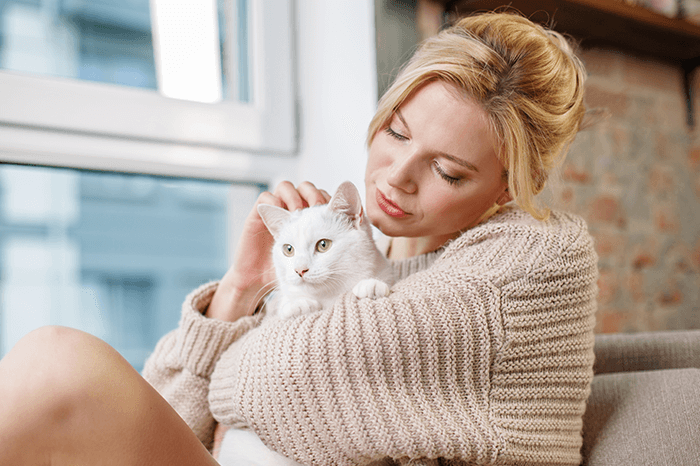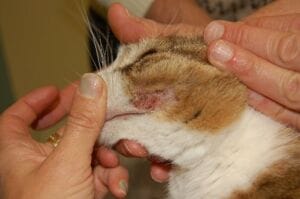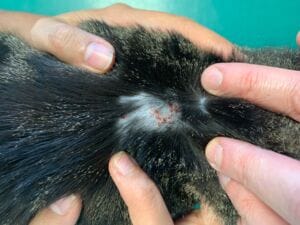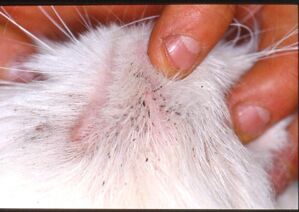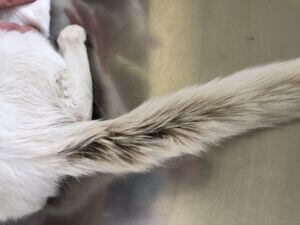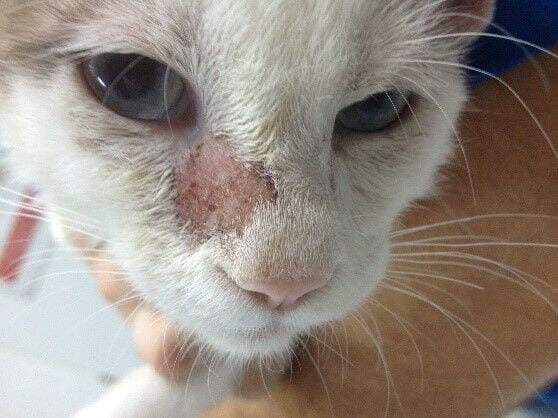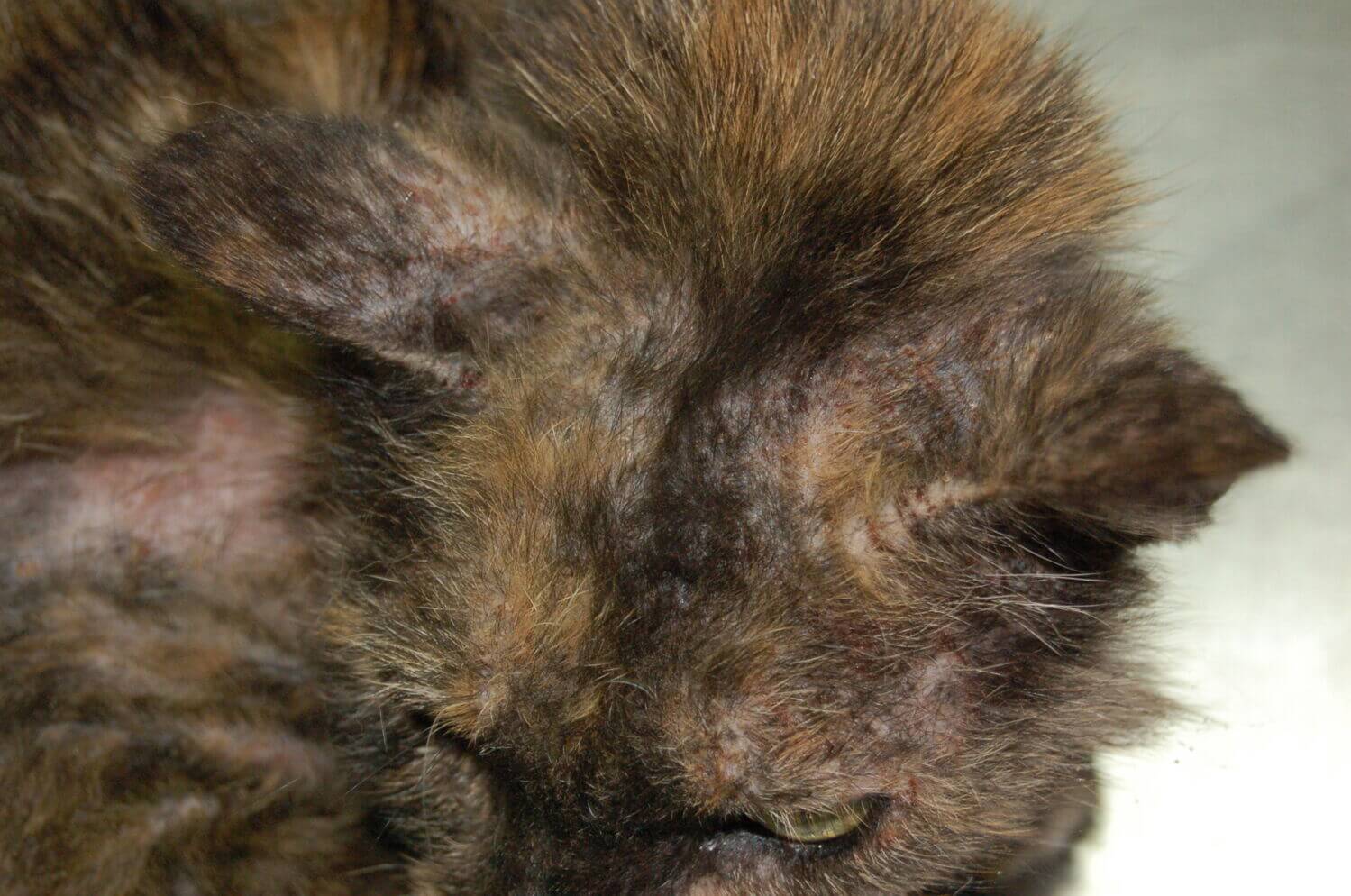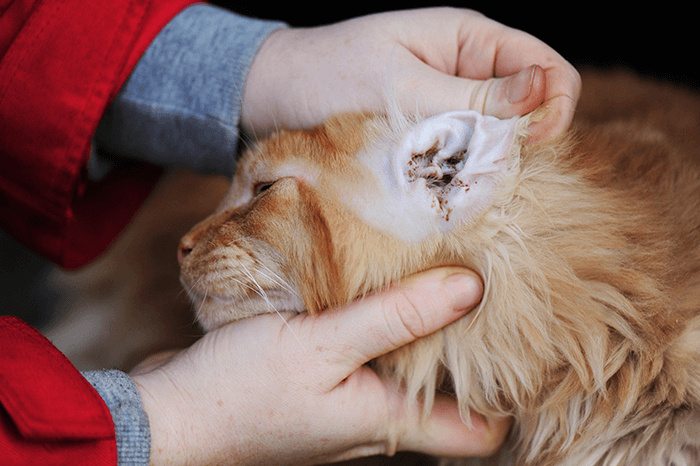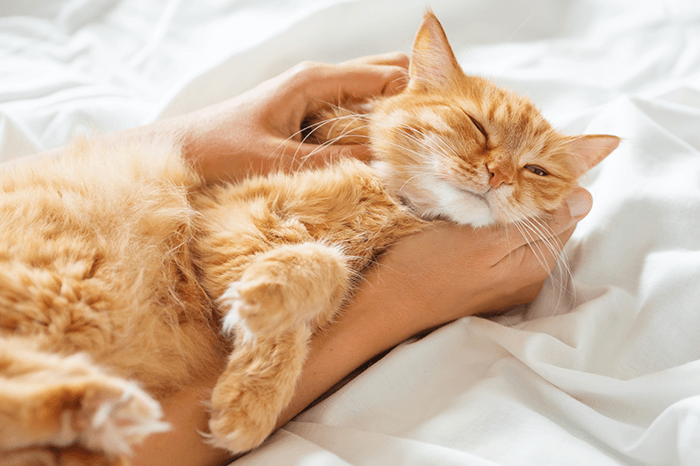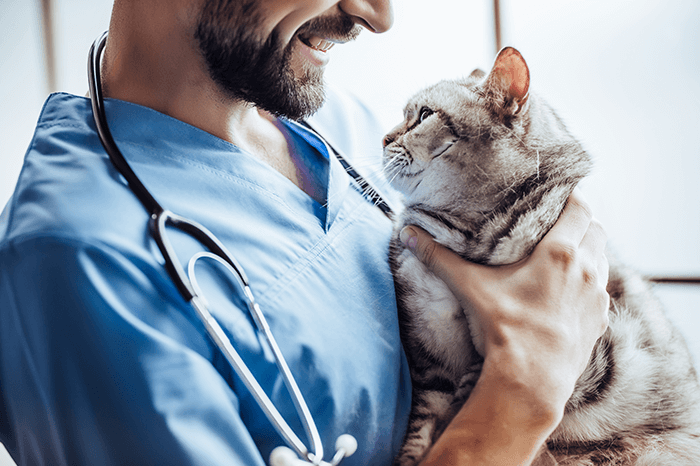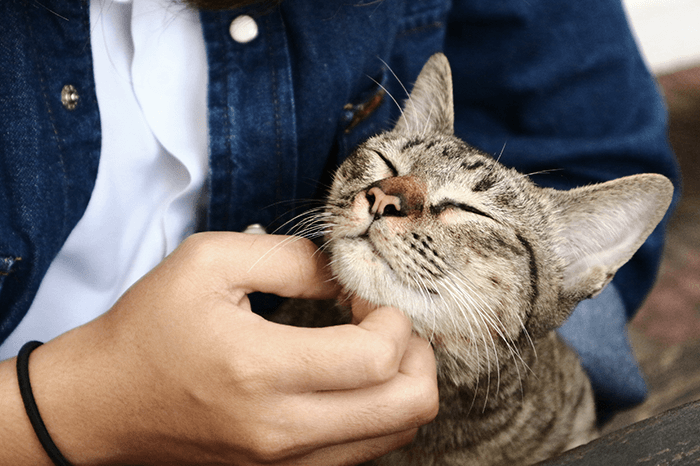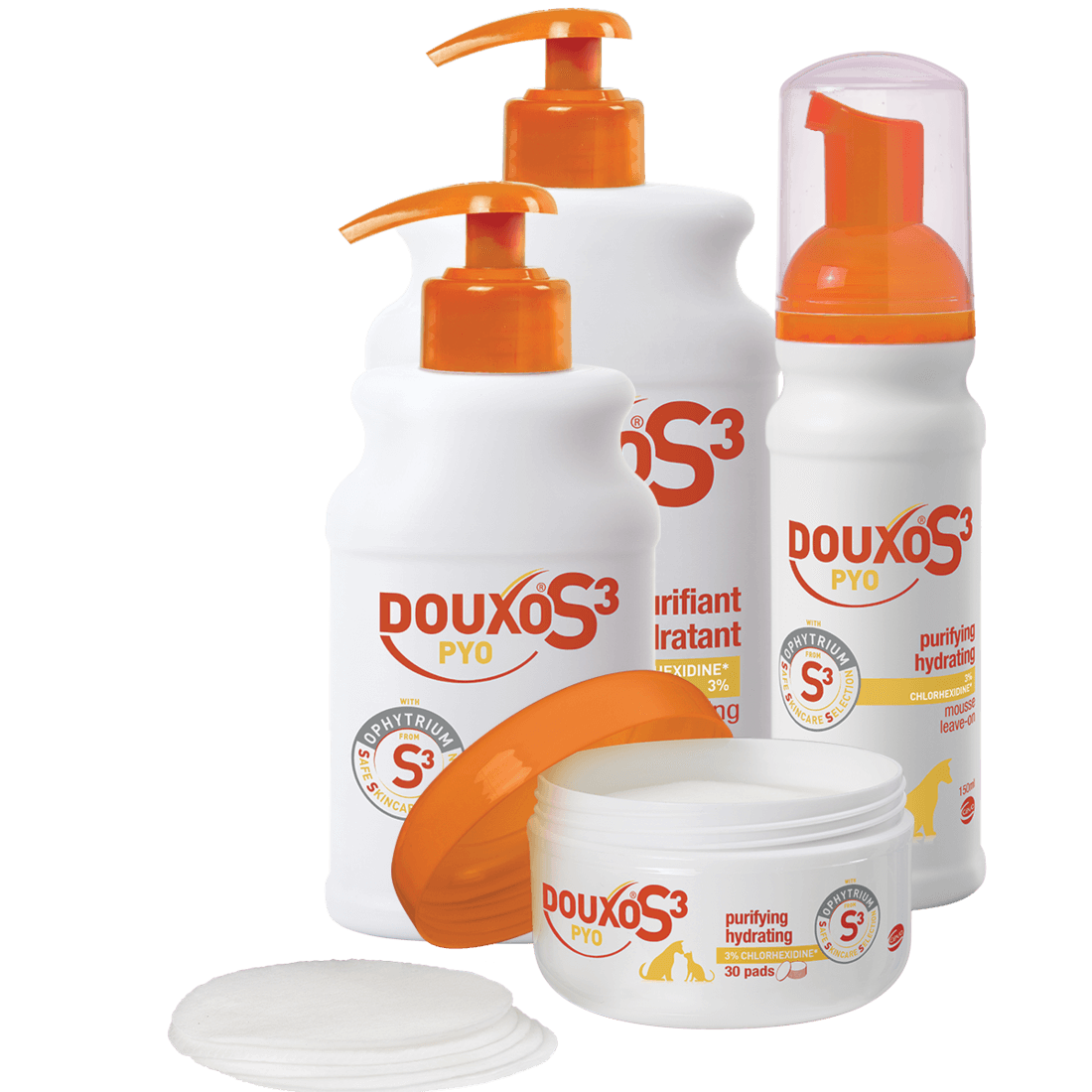Everything you need to know about skin infections in cats
Marina G VeterinarianThe most common infection in cat is ringworm. Bacterial and yeast infections are uncommon and linked to self-induced trauma or internal body disease.
With the skin being the first defence barrier against all kinds of external aggression, it’s not surprising to realise that skin problems frequently affect cats.
But fortunately, when it comes to skin infections in cats, these don’t seem to be as common as in dogs, apart from ringworm. These often develop due to an underlying condition that leaves the skin more fragile, such as allergies with self-inflicted trauma linked to itch, for example, or one that compromises cats’ immunity, such as diabetes.
It’s important to keep in mind that infection is a broad term that refers to the pathological overgrowth of microorganisms on the skin and that there are different types of microorganisms capable of infecting the skin, the most common being:
- Bacteria
- Yeasts
- Fungi
If your cat has a cutaneous (skin) infection, this can mean that there is an underlying problem, so don’t hesitate to seek veterinary help.
What does a skin infection look like?
There are a number of lesions that can be suggestive of a skin infection – most of the time apart from ringworm, what we see, and treat, is the secondary infection of self-inflicted lesions due to the cat scratching or licking excessively. These usually reflect the underlying condition that is debilitating your pet’s skin, and can include:
- Circular hair loss/broken hair, desquamation and sometimes a pink/red margin around central healing, sign of ringworm
- Small, crusted lesions on the trunk for example (miliary dermatitis)
- Crusts on the head and neck
- Raw skin (excoriations, erosions or ulcers) and wounds
- Flaky skin with dandruff, oily skin especially at the base of the tail
- Also, as skin infections are usually very itchy, you’ll probably notice your cat scratching, rubbing or licking affected areas leading to bald areas
What causes skin infection in cats?
Bacterial skin infection – pyoderma
Bacterial skin infections, also commonly referred to as pyoderma, are most often caused by Staphylococcus pseudintermedius, a bacteria species that usually resides in the skin.
As with other types of skin infections, bacterial infections are usually opportunistic in nature and will develop as a consequence of an underlying disease or self-inflicted trauma due to itch.
Common conditions that progress to bacterial skin infections
- Feline acne
Feline acne manifests as blackheads on the chin that make it look dirty. For some cats, this is it.
However, other cats who are more severely affected can develop tiny bumps on their chin, which often becomes swollen (also referred to as ‘fat chin’) and infected. At this stage, cats are likely to be scratching their chin as well, worsening the infection and inflammation and causing new lesions such as broken skin and scabs.
Feline acne often has a recurring nature and, even though its cause is not known, there are certain factors that seem to be involved in its development, such as seborrhoea, stress, external aggression, and debilitated immunity.
- Allergic skin disease and other skin diseases
Be it atopic dermatitis, food allergies or flea allergy dermatitis, allergic skin disease is extremely pruritic (itchy). With cats scratching to try and find some relief, secondary lesions, such as lesions of the eosinophilic granuloma complex (this is a term that refers to a group of inflammatory skin problems in cats) or miliary dermatitis, often develop, and these sometimes become infected.
Subcutaneous abscesses
Even though an abscess is not a skin infection per se, it results from infection, and it is localised just under the skin.
Abscess formation is common in cats, especially when they have outdoor access and enjoy being out and about. Fights with other cats are often what causes an abscess to develop, as bites and scratches carry bacteria that bury in the tissues.
An abscess can be recognised as a hot, red swelling that can have two puncture wounds on top of it. If the abscess ruptures, pus can be seen oozing out of it. Cat bite abscesses are most common on the tail, head, neck, and legs.
While the abscess develops, you may notice that your cat seems a bit more quiet than usual, and they may have a reduced appetite as well. Abscesses are also often painful, which may make your cat react aggressively or withdraw from social interactions. If they’ve been bitten on a leg, you may also notice limping.
Fungal skin infection – ringworm and Malassezia
Ringworm
Ringworm is a skin infection caused by fungi, also referred to as dermatophytes.
Cats catch ringworm from contact with infected animals or exposure to a contaminated environment. However, not all cats will develop the disease, and it seems that debilitated, young, or older cats are more predisposed to infection.
Ringworm lesions can have a circular shape (like a ring) and can vary in appearance from bald circular patches of dry, scaling skin to red skin with dandruff, papules, and crusts.
Unfortunately, this disease is contagious and can be transmitted to other animals in your household and to you and your family as well, especially if they are debilitated or immunocompromised.
Malassezia
Malassezia is a type of yeast that can be found on the surface layers of the skin in healthy cats. In most cases, these yeast organisms cause no harm to the cat, but if numbers multiply, this can lead to dermatitis (red, swollen, sore skin).
Malassezia dermatitis, although fairly uncommon in cats, causes itchy, scaly, inflamed skin, predominantly seen in the ear canals, on the face, around the claws and on the chin (feline acne). The coat may appear greasy too.
Parasitic skin infestation
The most common parasitic skin infections that can affect cats are caused by mites. There are several species of mites that can lead to cutaneous problems, with the most common affecting the ears.
When there are ear problems, cats will usually show signs of auricular (ear) discomfort, itchiness and even pain, and you’ll often see them scratching their ears or shaking their head. You may also notice a characteristic ceruminous dark ear secretion that resembles coffee granules.
Mite infections in other parts of the body are not as common, and lesions can vary from dry, flaky skin to open wounds and broken skin from scratching, linked to walking dandruff, scabies or demodicosis.
It’s important to keep in mind that most mites are contagious to other pets. Some mites are even infectious to humans such as notoedric mange that cause transient lesions in humans.
How are skin infection in cats diagnosed?
Vets will perform a clinical examination and may also need to conduct further diagnostic tests in-house. Under the microscope, you veterinarian will be able to confirm confirm a skin infection and the offender involved (bacteria, fungus, parasite). Sometimes, may require laboratory testing such as culture to identify the cause and/or choose the most appropriate treatment.
Treatment of skin infections in cats
As skin infections can be caused by different agents, treatment will vary depending on which one is affecting your cat.
Also, these infections are almost always the result of an underlying condition, so for treatment to be effective, it’s essential to diagnose and treat that condition as well.
However, topical treatment is paramount in bacterial and yeast skin infections for 3 reasons:
- Cleaning affected areas with a pet-safe disinfectant, antiseptic solution, or shampoo first, such as DOUXO® S3 PYO Shampoo and Pads (for bacterial and yeast overgrowth), will help remove local products of inflammation and debris and allow direct contact of topical products with problem areas to decrease germ count.
- The application of active ingredients locally will help soothe your cat’s skin much faster, providing them with relief, which is so important in itchy cats to break the itch-scratch cycle.
- Nurturing and rehydrating the skin is essential to help restore its integrity and protective function.
Where the use of topical products is a problem, your vet can suggest alternative antibiotics and antifungal medications. Other fungi and parasites need specific medications.
Ear mites can be prevented with some spot-on formulations that may be a part of your pet’s regular parasite treatments. When treatment is required, it’s usually a combination of ear cleaning and application of an acaricidal drug within (and sometimes around) the ear canal.
Always use antibiotics, anti-fungal drugs and acaricidal drugs as instructed by your vet to help prevent antimicrobial resistance.
Depending on the type of infection, treatment may be recommended to all pets in your household.
How to prevent skin infections in cats
Infections are usually the result of an underlying skin or systemic condition. To help prevent skin infections in cats, make sure you address any cutaneous problems as soon as you spot them.
